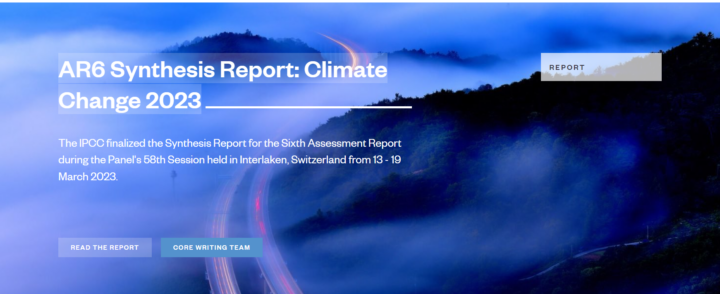AR6 Synthesis Report: Climate Change 2023
The comprehensive report of the sixth evaluation report of the IPCC is the last evaluation product in the sixth evaluation cycle of the IPCC. It was originally planned to be released in September 2022. Due to the COVID-19 epidemic and the change of the technical support team of the comprehensive report, and other factors, the release was postponed for half a year to March this year. The comprehensive report is prepared on the basis of three working group reports and three special assessment reports of the sixth assessment cycle of the IPCC, summarizing the main assessment conclusions on the facts, impacts and risks of climate change, as well as mitigation and adaptation to climate change.
The Decision Maker Summary is divided into three parts: first, current status and trends, second, future climate change, risks, and long-term response policies, and third, short-term response measures.
The report recognizes the interdependence of climate, ecosystems, biodiversity, and human society, the value of diverse forms of knowledge, and the close links between adaptation, mitigation of climate change, ecosystem health, human well-being, and sustainable development. It also reflects the increasing diversity of actors in climate action.
During the preparation process, the comprehensive report underwent two rounds of government review, and received nearly 7000 government review comments. At the 58th plenary meeting of the IPCC held on March 13-19, government representatives and observer organization representatives from 195 member countries reviewed the “Summary of Decision Makers” of the comprehensive report line by line, and considered and adopted the long report of the comprehensive report page by page. The release of the comprehensive report of the sixth IPCC assessment report will provide an important scientific basis for the international community and governments to further promote climate action and achieve sustainable development.
1、 Current status and trends
Human activities undoubtedly contribute to global warming, mainly through the emission of greenhouse gases. The global surface temperature in 2011-2020 increased by 1.1 ℃ compared to 1850-1900. Global greenhouse gas emissions continue to increase, and unsustainable energy use, land use and land-use change, lifestyles, and consumption and production patterns across regions, between countries, within countries, and among individuals have created unequal historical and future contributions.
Extensive and rapid changes have taken place in the atmosphere, ocean, cryosphere, and biosphere. Anthropogenic climate change has affected many extreme weather and climate events in every region of the world. This has resulted in widespread adverse impacts on nature and humans, as well as associated losses and damages. Vulnerable groups that have historically contributed the least to climate change are being disproportionately affected.
Adaptation planning and implementation have made progress in all sectors and regions, with documented benefits and varying outcomes. Despite the progress made, there are still adaptation gaps that will further widen at the current pace of implementation. In some ecosystems and regions, the rigid and flexible limits of adaptation have been reached, and some departments and regions are experiencing adverse adaptation. Currently, the global financial flow for adaptation is insufficient, which limits the implementation of adaptation programmes, especially for developing countries.
Since the fifth evaluation report of the IPCC, policies and laws for mitigating climate change have been increasing. According to the National Independent Contributions (NDCs) announced before October 2021, the estimated global greenhouse gas emissions in 2030 may cause the global temperature rise in the 21st century to exceed 1.5 ℃, and it is difficult to control the temperature rise within 2 ℃. There is still a gap between the expected emissions of implemented policies and the expected emissions of national independent contributions, and the financial flow has not reached the level required to achieve climate goals in all sectors and regions.
Source: IPCC



